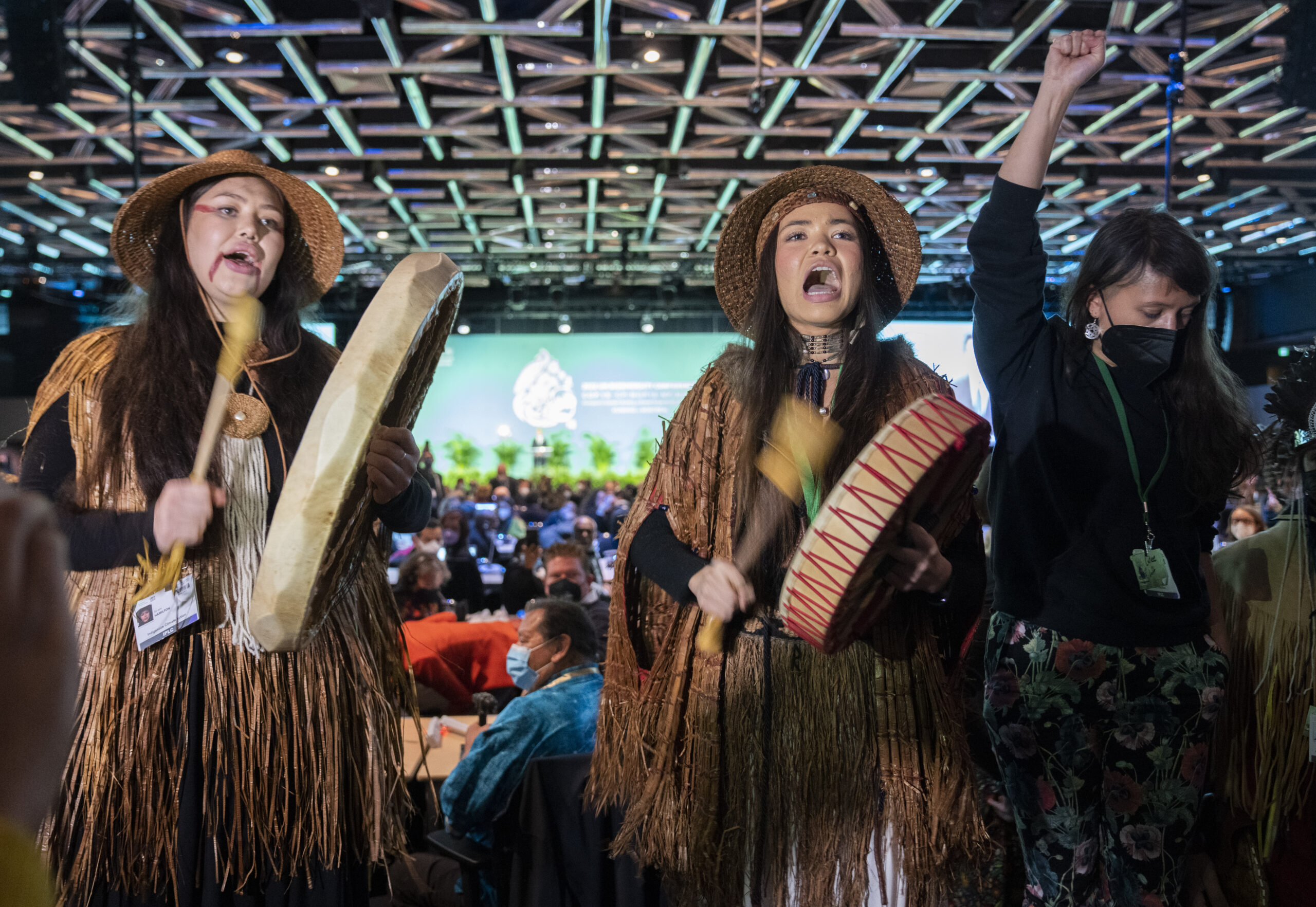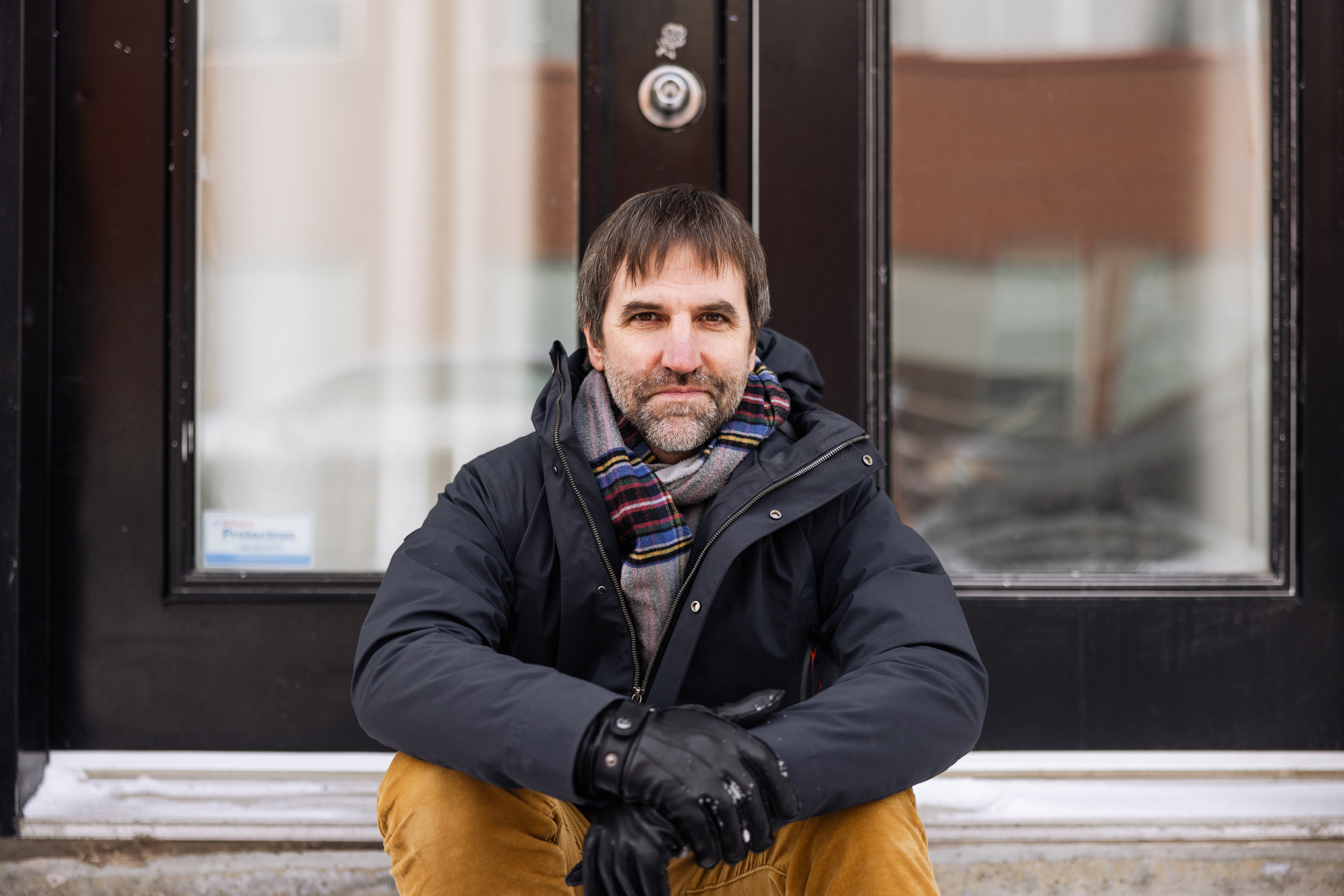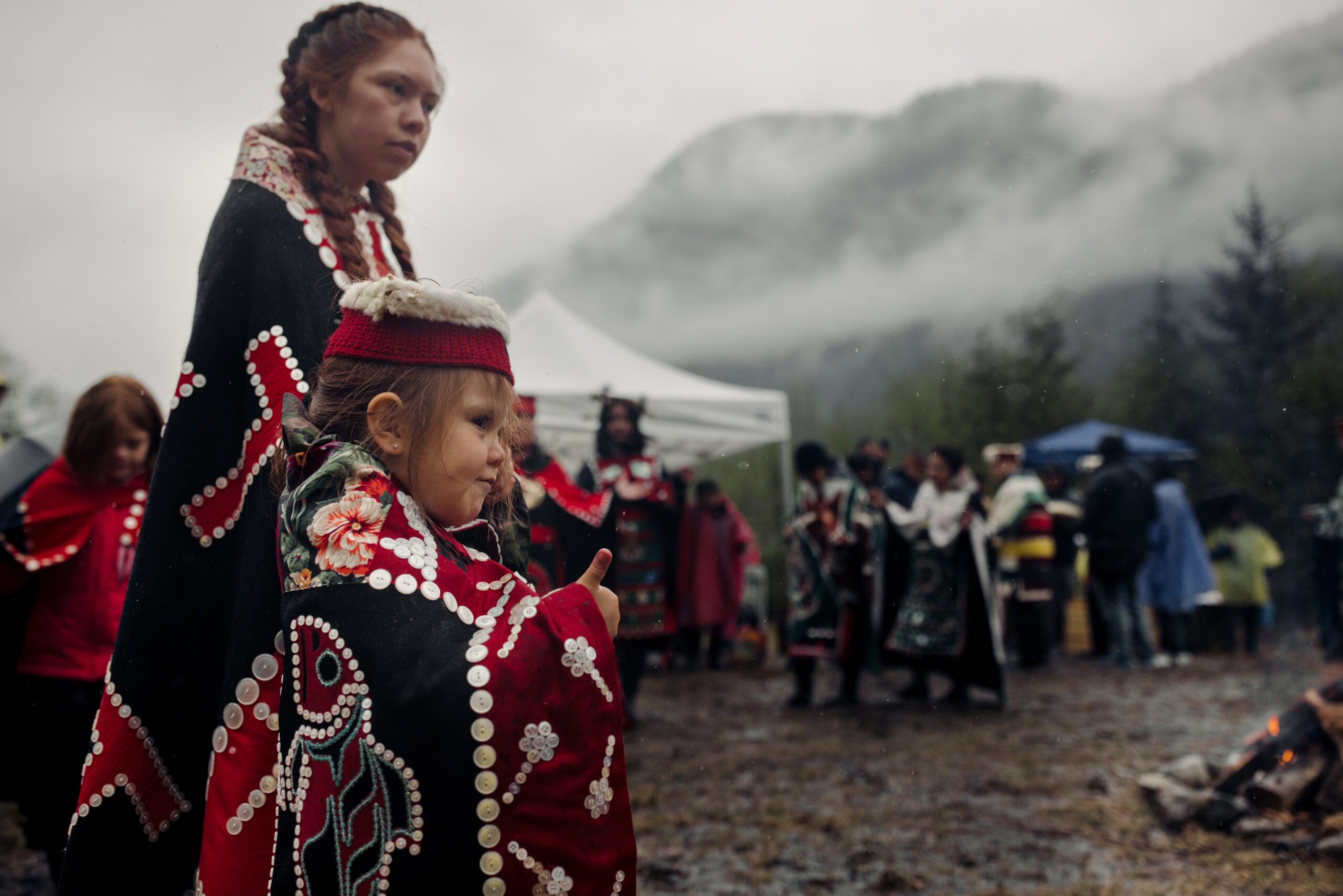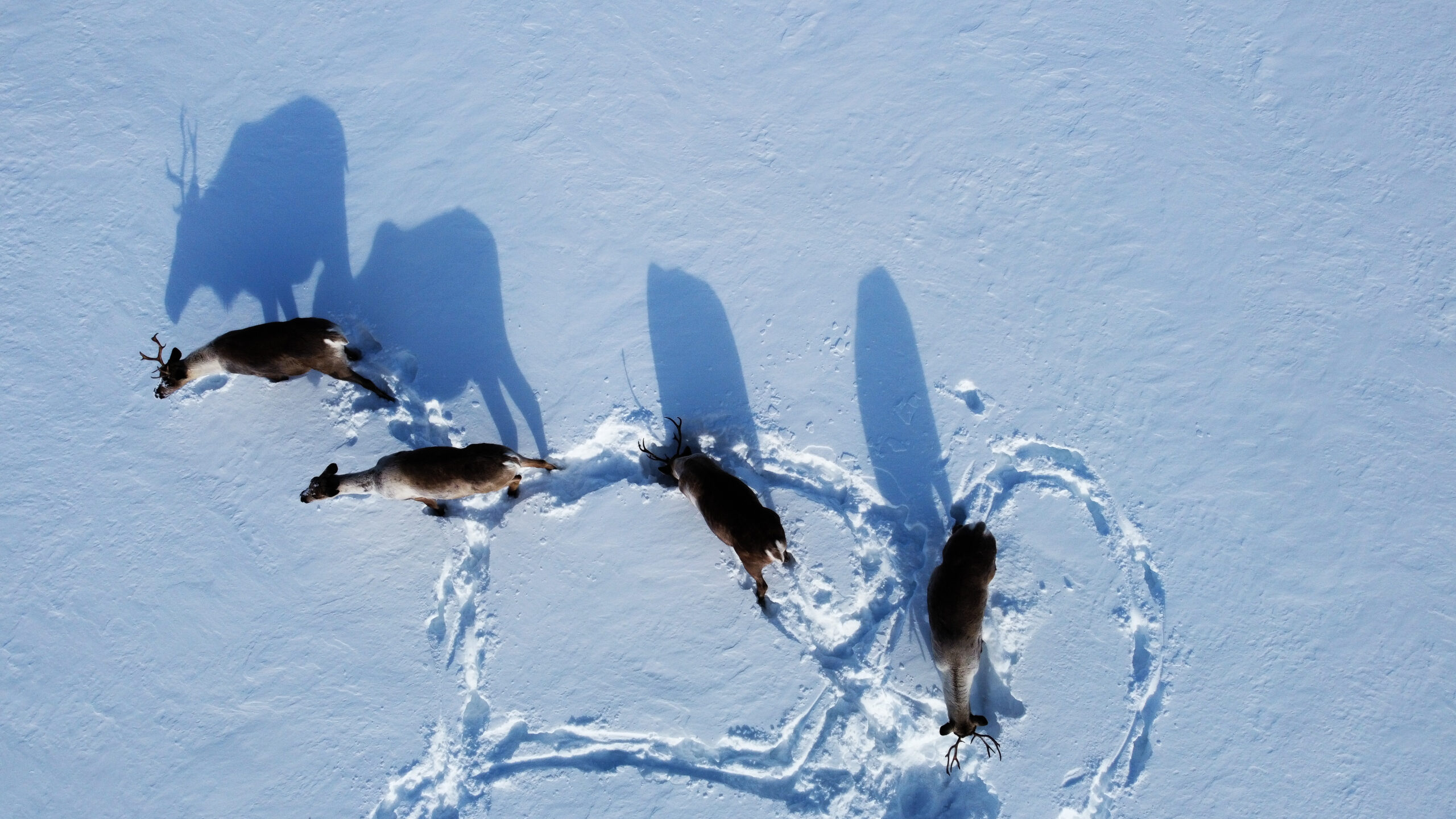
Rocky Mountain coal mine in Alberta takes next step to expansion
In Alberta, a massive open-pit coal mine near Jasper National Park is hoping to expand...
Canada is on track to conserve 25 per cent of lands and waters by 2025, Prime Minister Justin Trudeau said Wednesday during a roundtable with media, including The Narwhal, as COP15, the United Nations biodiversity summit, officially got underway in Montreal.
Trudeau’s comments came on the heels of an $800 million federal investment to support four Indigenous-led conservation initiatives in Canada that could see an additional one million square kilometres protected in the coming years.
“There is a clear path to 25 by 25 that we’re really, really happy about,” Trudeau said, noting more conservation announcements were coming down the pipe.
Canada had conserved 13.5 per cent of lands and freshwater as of the end of last year and 14.66 per cent of marine areas as of June.
James Snider, vice president of science, knowledge and innovation for World Wildlife Fund Canada, told The Narwhal “we can be optimistic” about reaching the 2025 targets. But only if the government continues to support conservation with strong policy and funding, which, he said, needs to “be done in the right way.”
An outstanding question, Snider said, is “what do we mean by protected and conserved areas.”
The “quality of protection is so important if protected areas are really going to be a mechanism to stop the loss of biodiversity globally,” he said.
During the roundtable, Trudeau said some resource extraction may be allowed in conserved areas.
“Building national parks is a great way of protecting very vulnerable areas, but as soon as you delineate one square and say that’s protected, what are you implicitly saying about everything outside of that square? That it’s suddenly just not protected, or it doesn’t matter at all?”
In a diverse country like Canada, faced with competing interests within communities, “that sort of binary approach doesn’t make a huge amount of sense,” he said.
Instead, there could be various levels of protection within vast conserved areas — strong protection for vulnerable watersheds in one area married with responsible mining or commercial hunting in another, Trudeau said.
Snider said a big conversation ahead is how those lands will be managed. But the primary goal, he said, must be the “stewardship of biodiversity.”
Charlotte Dawe, conservation and policy campaigner for the Wilderness Committee, said the quality of protection is critical.
“I have stood in freshly logged ‘protected areas’ supposedly made for the conservation of wildlife. If that’s what this government has in mind for meeting 30 by 30, it’s all smoke screen,” she said in an emailed statement to The Narwhal.

The prime minister said not only is he optimistic Canada will meet the 2025 targets, he’s also confident Canada will meet the next major target of conserving 30 per cent of lands and waters by 2030.
Given the country’s size, achieving that goal could be a significant milestone in efforts to reverse biodiversity loss. Thirty per cent of Canada’s land is equal to the entire European Union, Environment and Climate Change Canada Minister Steven Guilbeault noted.
Canada is now pushing for other countries to adopt the 30 by 30 target as part of a new global agreement to save nature under negotiation at COP15.
Trudeau said he’s confident at least 120 countries are on board.
But Guilbeault warned the target is “not a ceiling, it’s a floor.”
Up to 50 per cent of lands and waters may need to be conserved to maintain biodiversity and ecosystem services globally, according to a recent report by the Intergovernmental Panel on Climate Change.

“There’s a large area in Canada that will need to be protected in the coming years if we’re going to be successful in meeting these goals,” Snider said.
Importantly, he said, “the government is supporting Indigenous led-conservation, supporting Indigenous Protected and Conserved Areas as the primary means to get the 30 per cent protection, and that is the only way, if it’s going to be an equitable and just approach, for this level of conservation that we require.”
Tyson Atleo, the natural climate solutions program director at Nature United, told The Narwhal earlier this week that he remains hopeful Canada will meet its ambitious conservation targets, but he agreed the Canadian government can’t do it alone.
“The federal government can set these targets, but really the leadership of Indigenous communities and the provinces are absolutely essential to achieving these targets,” he said.
“Indigenous governments play and will continue to play a very active and strong role in the management of lands and waters and natural resources,” Atleo, who is line to be a hereditary chief of the Ahousaht Nation, said.
But more resources are needed to support Indigenous-led conservation and land and resource management, he said, noting that when Indigenous Peoples take the lead, it usually yields “stronger environmental outcomes.”

At the same time, Atleo said there’s a need to establish “clear and shared” mandates between federal, provincial and Indigenous governments when it comes to conservation and resource management.
“Where there isn’t alignment between the federal government and the provinces, we see a lack of implementation on the ground,” he said.
During the media roundtable Wednesday, Trudeau said “the fact that there’s not always full alignment between the provinces and the federal government on the way to build a stronger future is going to be one of the challenges to work through.”
Atleo said he hopes to see a return to “reciprocal relationships with these natural systems that give us life.”
“I hope people can start to realize our dependence on thriving natural systems for the well-being of our societies,” he said.
Atleo has witnessed a severe decline of Pacific salmon in his home territory of Clayoquot Sound on Vancouver Island.
“These are populations of salmon that our people depended on for thousands of years, suddenly at risk of extirpation,” he said, noting that loss threatens the well-being and health of his community.
A key shift moving forward, Guilbeault said, is it won’t be colonial governments or corporations imposing unilateral decisions on communities.
Indigenous nations will be in the “driver’s seat” on conservation and land use going forward.
“We’re completely shifting the way we make decisions on these things,” Guilbeault said.
But, even as Canada takes steps to reverse biodiversity loss, the federal government is encouraging new mining for critical minerals, used for instance to create batteries for electric cars or solar panels.
Trudeau said it’s a matter of finding balance between those two goals. Considering, for instance, the environmental impacts of a new mine, whether they can be managed, whether the mine is proposed in a particularly sensitive ecological area or in a place that “all things considered is not a terrible place to have a mine overall.”
It’s a matter of “making sure you’re listening to all the range of voices, making sure that there’s proper science done, making sure there’s accountability on the business case — that means that there’s money to clean it up if it goes belly up,” he said. “All those different things have to be included in the decision making upfront.”

“As the world tries to move away from fossil fuels, Canada has an important role to play, but we have to do it right,” Guilbeault said.
However, Canada has a long history of prioritizing the needs of industry over those of nature to overcome. Across Canada there are numerous examples of governments approving new logging, mining, oil and gas extraction or urban development in habitat that’s critical to endangered caribou, salmon, whales and other at-risk species.
Canada has positioned itself as “progressive on biodiversity and on nature and environment related issues,” Aliénor Rougeot, climate and energy program manager at Environmental Defence, said in an interview earlier this week. But “there’s an ongoing story of sacrificing biodiversity for the benefit of short-term economic gains.”
She pointed, for instance, to ongoing concerns about the devastating impacts of Alberta’s massive tailings ponds in the oilsands.
There is hope for a better future for nature and people. Rougeot noted Canada has made progress on its nature commitments and it’s possible to do more quickly.
“Resilient, rich biodiversity could be a huge asset in the fight against climate change,” she added.
“The one caveat,” Rougeot said, is “we can’t keep making exceptions for industries.”
There are high hopes COP15 will produce a strong global biodiversity agreement and mark a turning point for saving species after countries failed to fully meet any of the targets in the last agreement in place between 2010 and 2020.
Scientists warn a million species are at risk of extinction worldwide as biodiversity declines faster than at any other point in human history.
The dramatic decline in biodiversity has been called the “forgotten crisis” because it hasn’t garnered the same attention as the climate crisis, Rougeot said.
The hope, she said, is that the Montreal summit underway now could be for biodiversity what Paris was for climate in 2015.
But that outcome is far from certain. Countries made limited progress during pre-negotiations over the weekend. And the draft framework remains riddled with bracketed text, which signal points of disagreement among the 196 parties to the Convention on Biological Diversity.
On Tuesday United Nations Secretary General António Guterres pressed governments to meet the urgency of the moment.
“With our bottomless appetite for unchecked and unequal economic growth, humanity has become a weapon of mass extinction,” he said.
“It’s time to forge a peace pact with nature.”
Get the inside scoop on The Narwhal’s environment and climate reporting by signing up for our free newsletter. A $335 million funding commitment to fund...
Continue reading
In Alberta, a massive open-pit coal mine near Jasper National Park is hoping to expand...

A trade war could help remake B.C.’s food system, but will family farmers be left...

First Nations are leading efforts to make sure lake sturgeon can find a home in...
